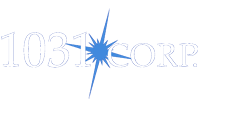Yes, the purchase of real estate held for the qualified use can take place before the sale if the purchase of the replacement property occurs as part of a reverse exchange.
While many different reasons exist as to why the purchase may need to take place before the sale, a few examples include that the taxpayer may run the risk of losing that perfect replacement property in a competitive real estate market or the sale of the relinquished property cannot be accomplished in advance of the purchase.
By utilizing a “reverse exchange” under Rev. Proc. 2000-37, the IRS provides a “safe harbor” to permit a taxpayer to purchase the replacement property first. Reverse 1031 CORP., acting as the Exchange Accommodation Titleholder (EAT), structures the transaction in such a way to allow the taxpayer to buy the new property before sale of the old property.
In order to avoid the taxpayer taking title to replacement property prior to the sale of the relinquished property, the safe harbor rules require “parking” title with the EAT to hold until the relinquished property is sold as part of a regular forward exchange. As soon as the old property is sold in conjunction with 1031 CORP. as acting as the Qualified Intermediary (QI), the new property is transferred back to the taxpayer. The transfer must occur within the 180-Day Exchange Period beginning on the date of the replacement property closing.
Yes, it is more common for the replacement property to be parked with the EAT but it is possible for the taxpayer to sell the relinquished property to the EAT first.
As part of a regular forward exchange with 1031 CORP. as QI, the taxpayer conveys the relinquished property to the EAT by deed and the taxpayer funds its own exchange account with the QI equal to the amount of equity it has in the relinquished property. Then, using the exchange funds the taxpayer provided to the QI, the replacement property is purchased as part of the forward exchange. Once the taxpayer finds a bona fide purchaser for the relinquished property, the EAT sells the old property to the new buyer. The net proceeds from the sale may then be used to pay down any mortgage debt encumbering the old property with the balance to the taxpayer. The taxpayer should be mindful of transfer taxes, costs, and other expenses associated with a relinquished property transfer as part of a reverse exchange. Also, the taxpayer should confirm with any and all mortgage lenders that the potential exchange will not trigger an event of default.
Essentially the same reverse exchange procedures may also be used for purposes of constructing improvements to the replacement property as part of an “improvement exchange.” The replacement property may be acquired first or last using the EAT. Then, the taxpayer can begin performing work on the parked property and pay for labor, services, and materials that are incorporated and made part of the real estate during the exchange period. When the exchange funds are exhausted through the draw request and distribution process or the 180-Day Exchange Period has lapsed (whichever is earlier), the improved property is conveyed back to the taxpayer by deed or assignment of the membership interest in the titleholder LLC. The enormous benefit with an improvement exchange is that the value of the property transferred back to the taxpayer includes not just the initial acquisition cost but also the value of all improvements the taxpayer is able to complete. It is important to note that all replacement properties as well as the proposed improvements described with as much specificity as is reasonably practicable need to be timely identified within 45 days.
Yes, if the replacement property purchase takes place first, then the purchase transaction would be called a reverse improvement exchange because the purchase transaction is taking place first in time. The subsequent sale of the relinquished property still must be sold as part of a regular forward exchange with its own separate documentation and fee with 1031 CORP. as QI in order to be able to use those proceeds to reimburse the taxpayer for its cash to close plus improvements constructed to date and/or as a pay down of some or all of any mortgage debt encumbering the replacement property.
The last step in a reverse or improvement exchange is for the EAT to convey ownership of the replacement property to the taxpayer. The transfer of the replacement property by the EAT to the taxpayer is accomplished by deed or assignment of the membership interest in the new titleholder LLC holding title to the property.
Several financial, administrative, legal, and tax considerations exist when concluding a reverse or improvement exchange via deed or assignment of the membership interest in the titleholder LLC, particularly when a third-party lender is involved. As with all matters concerning 1031 exchanges, it is highly advisable to consult with an independent professional regarding the legal and tax consequences associated with either using a deed or an assignment of membership interest in the titleholder LLC for purposes of concluding a reverse or improvement exchange transaction.

With 1031 CORP. as QI and Reverse 1031 CORP. as EAT, a taxpayer can utilize the reverse and improvement structures to maximize the tax deferral benefits associated with performing like-kind real estate exchanges under Section 1031.
Reverse 1031 CORP. recommends that any Taxpayer considering a reverse or improvement exchange discuss the structure and expense with their independent tax/legal advisors and weigh the tax savings against the transaction costs to see if it is still worthwhile. Reverse and improvement exchanges are not as complicated as they appear, with Reverse 1031 CORP. at the helm, working with the taxpayer, their advisors, and those involved to simplify the transaction for all parties.

©2025 1031 CORP. All rights reserved. Privacy Policy